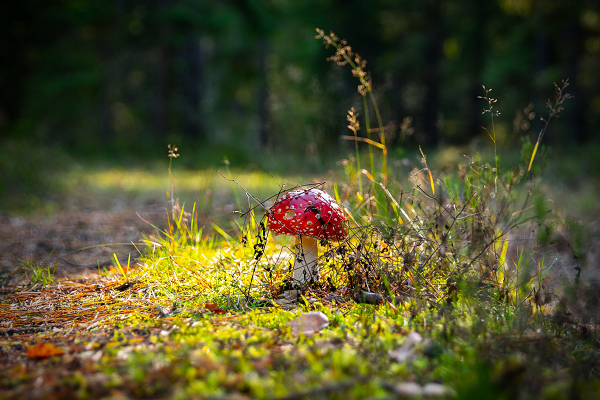A Walk in Nature at Snipe Dales Country Park & Nature Reserve

Bright sunshine skims across the woodland floor, peeking through trees and casting long shadows on the ground. As I walk, leaves crunch with each footstep. The wind prickles against my cheeks. A mucky-sweet smell of decaying leaves reaches my nose. I take a deep, purposeful breath. Autumn has arrived.
Each autumn, I like to make the short trip to Snipe Dales, one of the Lincolnshire Wildlife Trusts nature reserves, only a 10-minute drive from Horncastle. Although it’s open all year round, it’s during autumn when this woodland nature reserve really comes alive.
Situated on the edge of the Wolds just outside Lusby, Snipe Dales is an attractive valley of mixed woodland fretted by streams. It is a nature reserve of two halves. On one side, the nature reserve opens out into wildflower meadows and wet valley systems – a haven for insects such as butterflies and dragonflies. On the other, the Country Park takes you into the heart of the woodland, with some steep slopes usually only seen on BMX trails. It is this, dog-friendly Country Park that me and my trusty canine companion set off to.
As well as being a nature reserve of two halves – one of open landscape suited for wildlife watchers, binoculars in hand; and the other surrounded by woodland for those with furry family members; Snipe Dales also has a good balance of stripped-back, waymarked routes - so you know where you’re going whilst still feeling totally immersed in the wild.
Following the green waymarkers, we head down hill (and we thought Lincolnshire was flat!) and to the left, following our ears towards the melody of the woodland canopy, rustling in the breeze. One of the wonders of woodlands is the birdsong, and in this thin, crisp, autumn air it seems amplified.
The familiar song of a robin is first to entice my attention. Robins are very territorial birds, and as such are one of the few birds in the UK that continue singing through the autumn and winter to defend their territories. Their song is different from the spring however; it holds a different purpose. They’re no longer trying to show-off to attract a mate, only to let others know of their presence. Their song therefore is more subdued and mellow.
We continue walking (my dachshund is doing a great job at heaving me up the hills!), following the stone path, dodging puddles. Some puddles are unavoidable so I’m glad I’ve worn my walking boots. The dog on the other hand is used to his home comforts, and knows it only takes one look for me to scoop him up over the mud and onto drier ground.
Following the path through the woodland rides, I hear some rustling in the leaves to my right. We slow to a stop, keeping quiet and keeping our distance, hoping to go unseen. Dried leaves flick up in the distance and I spot a flash of a bright white rump. A jay.
These colourful birds are members of the crow family and have brilliant blue wing patches, a speckled head and black moustache. During the autumn, jays will collect acorns and store them for the winter ahead. This shy bird is soon gone again, and I wonder if it will remember to return for its cache or if there will be a new oak sapling there by spring.
With my head still turned to the trees, something else catches my attention, just on the side of the stone path. Its red colour almost unnatural against the brown, yellow and green backdrop of fallen leaves. A child’s lost glove? A plastic dog toy? Creeping closer, crouching over, I see it’s a toadstool.
‘Fly agaric’ is its common name. Its red cap with white spots and stalk makes it the classic, fairy tale toadstool. This part that we see is known as the fruiting body, or mushroom; its bright red colour telling us its poisonous. Below the ground lies an unseen network of tiny filaments called hyphae, which together form a structure known as the mycelium. This mycelium is known to form a symbiotic relationship with the surrounding trees – working in a way to benefit them both. They wrap around tree roots and supply them with nutrients taken from the soil. In return, the fungus receives sugars produced by the trees. It amazes me to think of the hidden network of life, right beneath our feet.
As we continue walking back around to our start point, and the sun falls lower in the sky, I reflect on how much ‘lighter’ I’m feeling. In Japan it’s known as shinrin yoku, or forest bathing. Just a simple walk through a woodland can do wonders for your health and wellbeing in a natural way. Turning off devices, slowing down and really noticing nature. What can you see? What can you smell? Use all your senses and surrender to nature. You will feel better for it.
More on Snipe Dales: https://www.lincstrust.org.uk/snipe-dales
